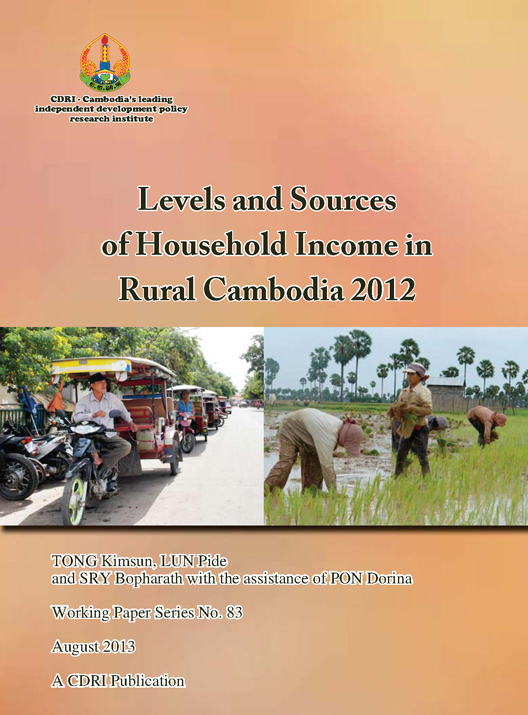
Levels and Sources of Household Income in Rural Cambodia 2012
Keyword: Rural income, Cambodia, non-farm employment, income inequality, household livelihoods
Abstract/Summary
This study
investigates the levels and sources of household income in rural Cambodia from
2004 to 2012, using data from the Cambodia Socio-Economic Survey and a 2012
rural household survey conducted by CDRI. It reveals that rural households
primarily depend on agriculture, though its share in total income declined over
time, while salaries and wages gained prominence. Non-farm self-employment
income was significant for wealthier households but less accessible to poorer
and female-headed households due to limited education and capital. Income
inequality widened during the study period, with the highest quintile earning
up to 3.5 times more than the lowest. Regional disparities persisted, with
coastal areas showing the lowest income levels. The study also explores
household perceptions of future income, highlighting internal factors such as
labor and capital, and external influences like local labor markets and
business conditions. Despite economic shocks, rural income showed resilience,
though growth was uneven. The findings underscore the need for inclusive growth
strategies and improved access to education, credit, and infrastructure to
enhance rural livelihoods and reduce poverty.
DOI: https://doi.org/10.64202/wp.83.201308



